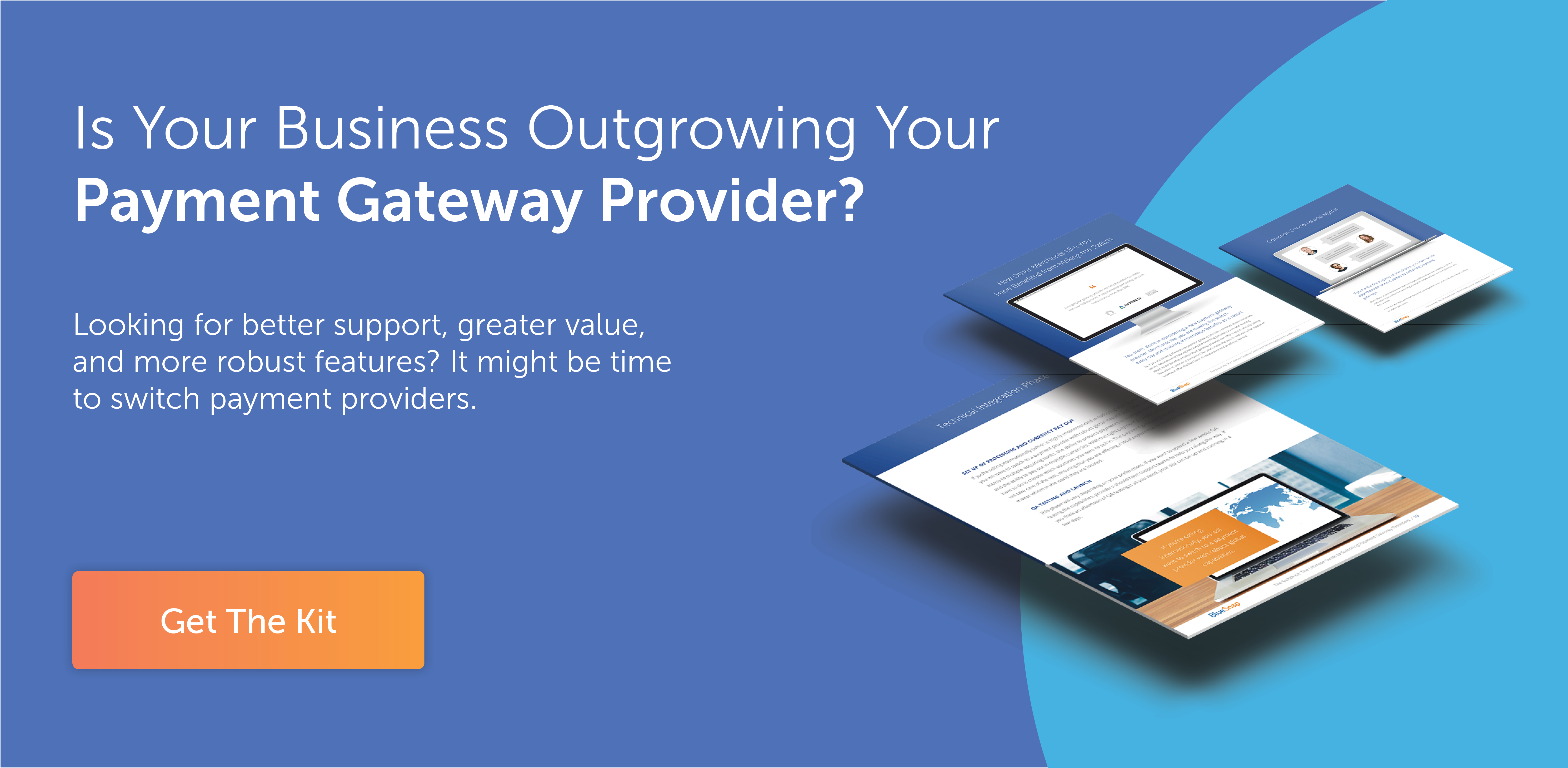Your business is full of opportunities for savings, but they’re often hidden away in places traditionally viewed as cost centers, such as your legal, finance, or accounting departments. When an area of the business tends to take, rather than make, money, that investment always needs to be justified—and opportunities for savings should be celebrated and taken advantage of.
Payments is one such area of the business. To encourage future investment in strong payment solutions, and to make the payments process as simple and as cost effective as possible for both your customers and your employees, you must discover exactly where your investments lie, and why. Today, we’ll take a closer look at how much you might be spending on payment gateway integrations, specifically, and where you could take advantage of opportunities to save.
What is a Payment Gateway?
A payment gateway allows payment data to flow between your website and your banking network, authorizing cards and sending the payment information to your bank for processing. The definition is straightforward, but costs aren’t always the same or always visible — especially when you have multiple payment gateway integrations.
What Are Your Integrations Costing You?
Integrating multiple payment gateways as your business grows requires varied levels of investment and varied investment types. Three main pricing structures make up the market today:
- Classic
These are simple gateway pricing structures similar to PayPal’s: Sellers get a rate of about 2.9% + $0.30 per transaction. - Innovative
The merchant pays a monthly fee and (maybe) a per-transaction fee. - Interchange Plus
These rates are usually the interchange rate plus a markup. The markup can be a percentage or a flat fee, or even a per-transaction fee. Interchange-plus models are usually reserved for larger, established companies.
As you can see, all three payment gateway integration pricing models will increase your costs as you sell more. But it’s not only growth that can cause your gateway integration costs to get out of hand. Other hidden costs include PCI compliance fees, support and reporting fees, and extra cross-border fees, plus the internal costs to manage, maintain, and troubleshoot gateways when problems arise.
So what are you really paying—especially when you have multiple gateways?
Understanding Your Rates
Two overarching concepts plague merchants as they grow and tack on additional payment gateway integrations. The first is poor rate negotiation. The second is complexity. Let’s dig deeper:
Single rate negotiation
So often, the deal you think you’re getting is not the deal you’re actually getting. Without a careful examination of every payment gateway you’ve ever integrated and its cost over time, it’s far too easy to lean on the rate you’ve negotiated and call it the total cost.
But when you dig in, you find that in addition to, for example, the 2.1 percent you believed you were paying for the integration, there are also additional charges at the end of the month. Or when you consider the percentage of failed transactions, you see that you are paying even more than you realized. Whatever the outcome, reliance on a single rate negotiation for any of your payment gateways can cause you to pay out unexpectedly, or to lose out on payments you otherwise might have captured.
Complexity
The decision to add new payment gateway integrations usually follows on the heels of some added payment complexity emerging.
Let’s say your business started with a limited gateway, simply designed to accept payments in one fashion and in your home currency (for example USD). A lot of payments processors can only process US dollars, or perhaps they don’t allow you to accept recurring transactions, or maybe they can’t store customer information details securely, causing your customers to enter their information every time (and causing you to lose sales).
If you begin with a limited gateway, and then need to respond to additional demands over time, you find out exactly what your gateway is missing. It makes sense, then, in the moment, to tack on another gateway just to give your customer a quality experience — and to make sure you are capturing their sales.
But added complexity occurs fast. Imagine you’re a small local furniture company. On Wednesday, sales are flowing as they normally do, but on Thursday, you wake up and word has spread globally that your furniture is the best on the planet, and you have customers knocking down your door to get their hands on your product.
Those customers need different currencies enabled, and want to pay you with different payment types, and you start incurring all sorts of risks. So you add another payment gateway integration to handle the need, and another as the need grows or changes. And another as you grow more. Suddenly, you have multiple payment gateway integrations—and their costs have become completely obscured.
If you don’t add those integrations quickly enough, you risk lost sales due to declined transactions or impatient (rightly so!) customers. But when you add them too quickly, you lose sight of your own costs.
As your business grows and adds complexity (necessarily, more customers want more options), you can’t be messing with a lot of little added costs. While it may be tempting to keep shoving new integrations into your payment stack in order to please your customers, creating specificity this way is not recommended. Achieving the ability to respond to specific payments needs via gateway consolidation is a better bet.
Narrow it Down
Expanding functionality in your business does not require you to add more new gateways. With BlueSnap, recurring transaction support, tokenized information, support of over 100 payment types (ACH, Apple Pay, etc.) and currencies, and multiple payment methods mean you can rely on a singular payments framework to provide the flexibility required for a growing or established business.
Consolidating your payment gateway solutions offers an enhanced customer experience, an opportunity for growth, and of course, additional agility.
While an optimized payments flow isn’t high on the priority list for most gateway providers, BlueSnap gets you up and running with an eye toward quality and optimization in a much shorter time than it would take you to resolve a set of failed payments with several different providers, and in a much shorter time than it would take you to sort through the various rates and fees you’d incur with multiple gateways.
Keep your business running and your gateway integrations minimal. Ready to switch to something more consolidated? Read our Gateway Switching Guide now.
Frequently Asked Questions
What is a gateway?
A gateway connects the merchant to the acquiring bank where the merchant has opened a merchant account.
What are recurring payments?
Recurring billing and subscription billing are essentially interchangeable terms for a payment model where a business automatically charges a customer’s credit card for products or services on a regular billing schedule.
Recurring payments occur when customers enter their billing information once and grant the merchant permission to charge them at an agreed-upon cost and frequency. Subscription services will charge recurring payments on a monthly or annual schedule, until the customer withdraws permission or cancels their subscription.
Can I use BlueSnap for recurring or subscription billing?
Yes – we have an award-winning subscription billing platform. We also integrate with multiple subscription platforms. Learn more about it here.
How much does it cost to use BlueSnap?
We offer competitive pricing and custom pricing for high transacting volume businesses. The standard initial pricing is available here.


